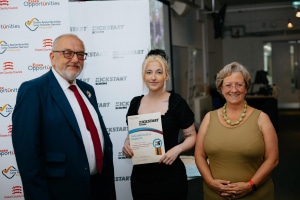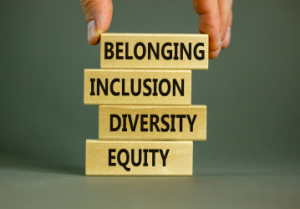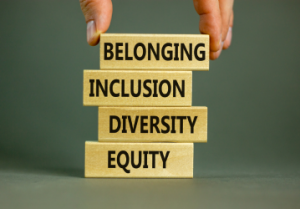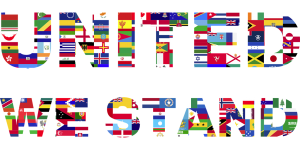 A Leader’s Guide to Building a Positive Culture in the Workplace
A Leader’s Guide to Building a Positive Culture in the Workplace
In today’s diverse and dynamic UK workplaces, cultivating a culture of respect is more crucial than ever. The Gallup Global Emotions 2024 report reveals that 85% of people worldwide felt treated respectfully all day. But how does the UK measure up, and more importantly, how can we as leaders ensure our workplaces are bastions of respect and dignity?
The UK Respect Landscape: Room for Improvement
Before we dive into solutions, let’s consider the current state of respect in UK workplaces:
- Only 65% of UK employees feel they are always treated with respect at work (CIPD)
- 1 in 4 UK workers have experienced bullying or harassment in the workplace (TUC)
- Companies with respectful cultures see 26% higher revenue per employee (SHRM)
These statistics highlight both the challenge and the opportunity for UK businesses to leverage respect as a driver of engagement, wellbeing, and productivity.
5 Powerful Strategies to Foster a Culture of Respect in UK Workplaces
Implement Comprehensive Respect and Inclusion Policies
Global insight: Countries with strong anti-discrimination laws report higher levels of workplace respect.
UK Application:
- Develop clear, comprehensive policies on respect, diversity, and inclusion
- Ensure policies are easily accessible and regularly communicated
- Provide training on these policies for all employees, especially managers
Action step: Launch a ‘Respect Charter’ that all employees sign, outlining expected behaviours and values.
Train Leaders in Inclusive Leadership
Global insight: Organisations with inclusive leaders report higher levels of respect among employees.
UK Application:
- Provide training on inclusive leadership practices for all managers
- Incorporate inclusive leadership behaviours into performance reviews
- Celebrate and reward leaders who exemplify respectful, inclusive behaviours
Action step: Implement a ‘Respect in Leadership’ award to recognise managers who excel in fostering a respectful environment.
Encourage Open Communication and Feedback
Global insight: Workplaces with open communication channels report higher levels of respect.
UK Application:
- Implement regular ‘listening sessions’ where employees can voice concerns
- Create anonymous feedback channels to report disrespectful behaviour
- Train managers in active listening and empathetic communication
Action step: Launch a monthly ‘Respect Round Table’ where employees can discuss workplace culture in a safe space.
Celebrate Diversity and Foster Cultural Intelligence
Global insight: Organisations that actively celebrate diversity report higher levels of mutual admiration.
UK Application:
- Organise cultural awareness events and workshops
- Create employee resource groups for different demographics
- Implement reverse mentoring programmes to foster cross-cultural understanding
Action step: Start a ‘Culture Share’ initiative where employees can share aspects of their cultural background.
Address Microaggressions and Unconscious Bias
Global insight: Workplaces that tackle subtle forms of disrespect report higher overall respect levels.
UK Application:
- Provide training on recognising and addressing microaggressions
- Implement unconscious bias training for all employees
- Create a system for reporting and addressing microaggressions
Action step: Develop a ‘Respect Toolkit’ with resources on addressing microaggressions and fostering inclusive behaviours.
Measuring the Impact of Respect Initiatives
To ensure your strategies are effective:
- Conduct regular employee surveys on workplace regard and inclusion
- Monitor changes in employee engagement and satisfaction scores
- Track retention rates, particularly among diverse employee groups
- Measure productivity and innovation metrics alongside respect initiatives
The Business Case for a Respectful Workplace
Fostering a culture of respect isn’t just the right thing to do—it’s a smart business move:
- Respectful workplaces see 30% higher productivity (Porath, 2016)
- Companies with inclusive cultures are 1.7 times more likely to be innovation leaders (Josh Bersin)
- 72% of employees who felt regarded by their leaders reported higher engagement (Salesforce)
Imagine a workplace where:
- Employees feel valued and heard, regardless of their background or position
- Collaboration thrives as diverse perspectives are regarded and welcomed
- Your company becomes known as an employer of choice, attracting top diverse talent
- Productivity and innovation soar in an atmosphere of psychological safety
This isn’t a pipe dream. It’s the reality for UK companies that prioritise respect and inclusion.
 Your Next Steps: Leading the Respect Revolution
Your Next Steps: Leading the Respect Revolution
Ready to transform your workplace into a beacon of respect and inclusion? Start with these actions:
- Conduct an audit of your current workplace culture
- Survey your team about their experiences and perceptions of respect at work
- Implement one new initiative from this article
- Share your commitment to creating a culture of respect with your team and invite their input
Remember, fostering a respectful culture isn’t about ticking boxes or implementing superficial policies. It’s about creating an environment where every employee feels valued, heard, and empowered to bring their whole self to work.
Are you ready to lead the respect revolution and unlock your team’s full potential? Your business’s future success—and your employees’ wellbeing—may depend on it.
Want to dive deeper into creating a respectful, inclusive workplace? Book a free discovery call with me here.

 I’m Sophie, and I’m going to share with you some insight into my personal journey as an employee living and working with Attention Deficit Hyperactivity Disorder (ADHD). As any person living with neurodiversity will tell you, it’s never a straightforward or linear journey. It comes with a lot of trial and error, ups and downs, and a lengthy process of finding what works for you. However, having the support of your colleagues and employers will be beneficial to anyone like myself.
I’m Sophie, and I’m going to share with you some insight into my personal journey as an employee living and working with Attention Deficit Hyperactivity Disorder (ADHD). As any person living with neurodiversity will tell you, it’s never a straightforward or linear journey. It comes with a lot of trial and error, ups and downs, and a lengthy process of finding what works for you. However, having the support of your colleagues and employers will be beneficial to anyone like myself.
 Clear communication and expectations have also been essential. My employer takes the time to provide me with detailed instructions and deadlines, ensuring that I know exactly what is expected of me. As someone who struggles following vague instructions, I need as much detail and information as possible. Asking for more clarity and receiving it has been great for my work.
Clear communication and expectations have also been essential. My employer takes the time to provide me with detailed instructions and deadlines, ensuring that I know exactly what is expected of me. As someone who struggles following vague instructions, I need as much detail and information as possible. Asking for more clarity and receiving it has been great for my work. Welcome to our journey of embracing neurodiversity in the workplace. As an employer, I’ve always strived to create an inclusive environment where every employee feels valued and supported. However, it wasn’t until we embarked on this journey that I truly understood the importance of seeing each individual and their unique set of needs that I really fostered an understanding of neurodiversity in our workplace.
Welcome to our journey of embracing neurodiversity in the workplace. As an employer, I’ve always strived to create an inclusive environment where every employee feels valued and supported. However, it wasn’t until we embarked on this journey that I truly understood the importance of seeing each individual and their unique set of needs that I really fostered an understanding of neurodiversity in our workplace.
 Our journey of embracing neurodiversity has been transformative, both personally and professionally. By making adaptations for employees and fostering understanding, we have created a workplace where every individual can thrive. I encourage other employers to embark on their own journey of discovery, because when we embrace diversity, we enrich not only the lives of our employees but also our organisations as a whole.
Our journey of embracing neurodiversity has been transformative, both personally and professionally. By making adaptations for employees and fostering understanding, we have created a workplace where every individual can thrive. I encourage other employers to embark on their own journey of discovery, because when we embrace diversity, we enrich not only the lives of our employees but also our organisations as a whole. Mental Health at Work – Time for a Different Approach
Mental Health at Work – Time for a Different Approach an open and supportive environment where individuals feel comfortable discussing their mental health challenges without fear of judgment. Encouraging open communication, providing access to mental health resources, and offering flexible work arrangements are effective coping strategies that foster a mentally healthy workplace. this will only happen when mental health is spoken about openly from the top of the organisation down. If I am having a challenging time I share it with those working around me. How can I expect others to share unless I am prepared to go first!
an open and supportive environment where individuals feel comfortable discussing their mental health challenges without fear of judgment. Encouraging open communication, providing access to mental health resources, and offering flexible work arrangements are effective coping strategies that foster a mentally healthy workplace. this will only happen when mental health is spoken about openly from the top of the organisation down. If I am having a challenging time I share it with those working around me. How can I expect others to share unless I am prepared to go first! Employee Happiness:
Employee Happiness: Metrics That Matter
Metrics That Matter physical and mental health of your employees. By identifying patterns and trends, HR teams can proactively address potential underlying issues, such as excessive workloads, stress, or burnout. This data enables companies to develop targeted interventions and support systems, promoting a healthy work-life balance and reducing the negative impact of absenteeism on productivity and morale.
physical and mental health of your employees. By identifying patterns and trends, HR teams can proactively address potential underlying issues, such as excessive workloads, stress, or burnout. This data enables companies to develop targeted interventions and support systems, promoting a healthy work-life balance and reducing the negative impact of absenteeism on productivity and morale. Celebrating Diversity
Celebrating Diversity
 trait that can affect people across the introvert-extrovert spectrum. It is important to remember that shyness is not a flaw but rather a personal characteristic.
trait that can affect people across the introvert-extrovert spectrum. It is important to remember that shyness is not a flaw but rather a personal characteristic. Some employees are struggling with being back in the office. Quite a few companies require employees to return to the office full-time or increase the number of days. I have definitely noticed a trend so far in 2023. I know many people who are being urged to amp up their office presence. Typically, the request is for an increase of 3-4 days a week in the office.
Some employees are struggling with being back in the office. Quite a few companies require employees to return to the office full-time or increase the number of days. I have definitely noticed a trend so far in 2023. I know many people who are being urged to amp up their office presence. Typically, the request is for an increase of 3-4 days a week in the office.
 What about Gen Z?
What about Gen Z? Can the four-day week work for your business?
Can the four-day week work for your business? part said that they found it easier to combine work and personal responsibilities, and 62% said it benefitted their social life. Employee resignations dropped by 57%, and the companies themselves saw increased revenue by 35%.
part said that they found it easier to combine work and personal responsibilities, and 62% said it benefitted their social life. Employee resignations dropped by 57%, and the companies themselves saw increased revenue by 35%. A personal perspective
A personal perspective